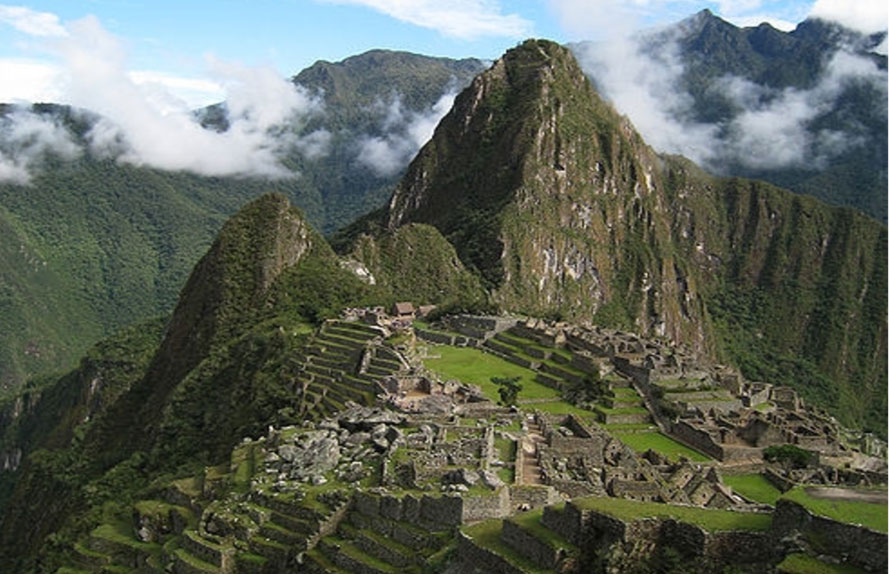Conquistadors caused Toxic Air Pollution 500 years ago by changing Incan Mining
Scientists studying ice core samples from Peru have discovered a variety of trace elements, indicating that Spanish colonial mining caused toxic air pollution over South America approximately 240 years before the Industrial Revolution.
The ice core samples, taken from the Quelccaya ice cap in Peru in 2003 were analyzed to create records of the regional climate and environmental data. Paolo Gabrielli of Ohio State University and his colleagues used these samples to trace ancient metallurgy and mining in South America from 798 to 1989. Early fluctuations in amounts of trace elements in the Quelccaya ice cores are attributed to volcanic eruptions in the Andes, according to Smithsonian, especially previous to the Spanish conquest of South America.
New Republic reports that the sprawling Inca Empire, largest of pre-Columbian America, possessed a mining technology which involved smelting metals in small clay furnaces called huyara. This was a largely inefficient process, but only impacted the local environment.
After the Spanish invasion in the 16 th century, the Conquistadors changed mining and smelting methods, increasing efficiency and enabling them to mine more of the coveted silver at a faster rate. However, the new process of extracting silver used toxic liquid mercury. The resulting metallic dust from mining and smelting was carried by winds and fell around the South American continent.
The study, published in Proceedings of the National Academy of Sciences, finds that “metallurgic activities performed during the Inca Empire (A.D. 1438−1532) had a negligible impact on the South American atmosphere. In contrast, atmospheric emissions of a variety of toxic trace elements in South America started to have a widespread environmental impact around A.D. 1540.”
MORE
- Researchers discover vast ancient gold mines in Spain, the largest of the Roman Empire
- Wilgie Mia, the oldest continuous mining operation in the world
- Pre-Incan Culture Didn’t Rule by Pillage, Plunder and Conquest

Inca silver figurines. Lombard Museum, Wikimedia Commons
This boom in industrial silver production was particularly evident at the mining city of Potosí, Southern Bolivia, now a UNESCO Heritage site.
“The Incas had been extracting and refining silver from Potosí for generations before the Spanish arrived. But during the colonial period, mining activity boomed, and Potosí became known as the largest source of silver in the world. By the 17th century, about 160,000 colonists lived in Potosí alongside about 13,500 indigenous people who were forced to work the mines under a system of mandatory labor,” writes LiveScience.

Coin minted from the silver of Potosi, 1768. Public Domain
The thick clouds of dust and smoke were carried 500 miles (800 kilometers) from Potosí to the Quelccaya ice caps in the Andes mountains.

Quelccaya Glacier located in southern Peru. Edubucher, Wikimedia Commons
The recent findings represent the earliest evidence of widespread air pollution caused by humans in South America. The evidence may play a role in establishing dates for the proposed Anthropocene – a term commonly referred to by scientists as the era in which human activities had a significant impact on the earth. Scientists debate the timeline of the earliest human environmental impact, with some pointing to the Industrial Revolution of the late 18 th century, and others suggesting agriculture and technology used as early as 15,000 years ago.
LiveScience notes that lead and copper have been detected in 2,500-year-old ice cores in Greenland, linked to ancient Greek and Roman mining.
"Until now, what we knew about pre-industrial atmospheric pollution was limited to the Northern Hemisphere," says Paolo Gabrielli.
Featured Image: The famous abandoned city of Machu Picchu. Incan architecture, c. 1450 A.D. Credit: Icelight, Wikimedia Commons
By Liz Leafloor

















Comments
yes ok ,was AL GORE there too. lmfao! The great and all powerful QUETZACOATL GORE